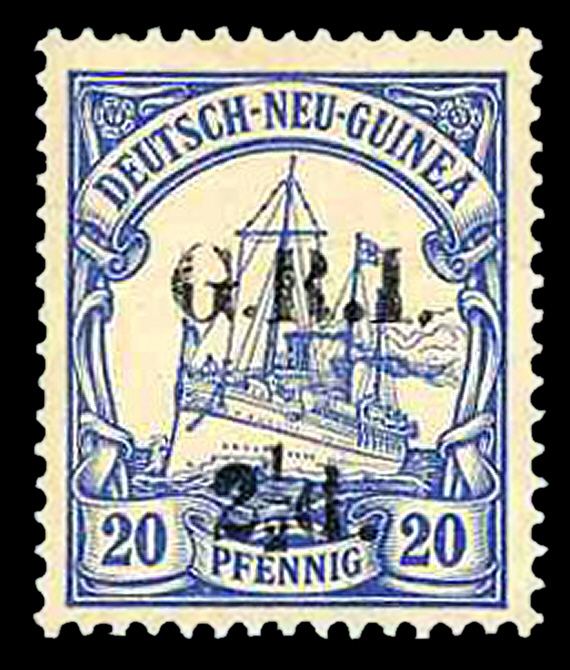 | ||
The postage stamps of New Guinea, part of present-day Papua New Guinea, were issued up to 1915 and are considered rare.
When the Australian Naval and Military Expeditionary Force occupied German New Guinea in 1914, it met the need for postage stamps by overprinting existing stocks of the (unwatermarked) German New Guinea and Marshall Islands stamps with "G.R.I." (short for Georgius Rex Imperator, referring to the incumbent British King George V). Values ranged from one penny to five shillings, and roughly corresponded with the values of the original stamps expressed in pfennigs: 1d on 3pf and 5pf stamps, 2d on 10pf and 20pf, and so forth.
The Australians issued a first setting of the overprint on 17 October 1914, followed by a second setting (with slightly different spacing) on 16 December. In all, they produced some 50 distinct stamps.
In addition, Australian postal authorities pressed registration labels into service as 3d stamps, overprinted in the same way as the others. Labels of the Friedrich Wilhelmshaven, Herbertshöhe, Kavieng, Kieta, Manus, and Rabaul post offices became overprinted in this manner.
In 1915 the Australians superseded these improvised stamps of New Britain with stamps of the "North West Pacific Islands".
Because of the short period of use of the New Britain issues, they occur quite rarely, and command high prices; the most common denominations cost at least $15 US a piece, and the five-shilling overprints fetch prices of over $10,000 on the rare occasions when they come up for sale. In addition, the overprinting process produced a number of errors, and these also command high prices.
